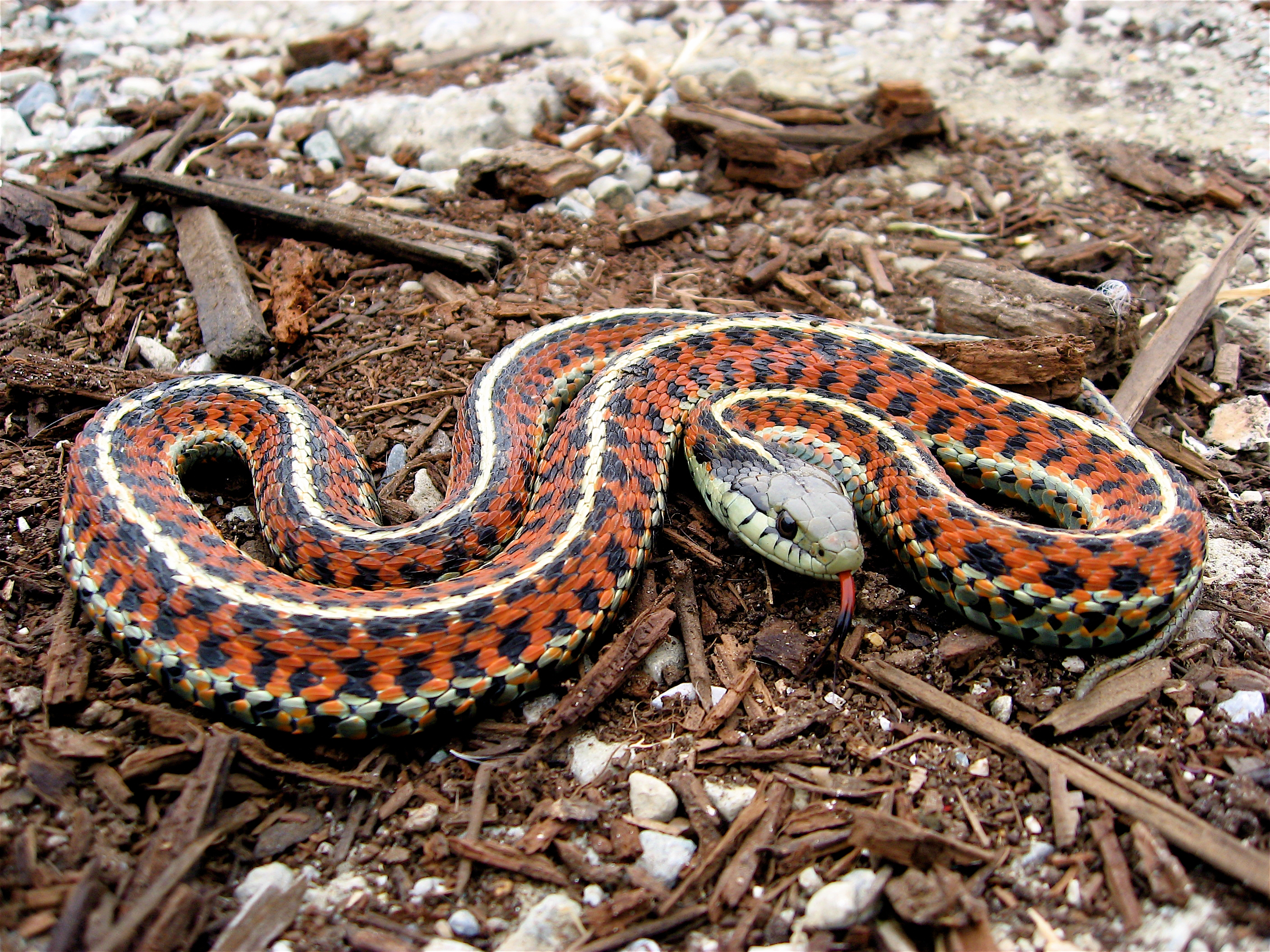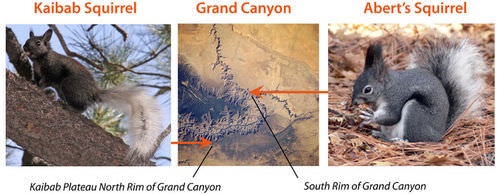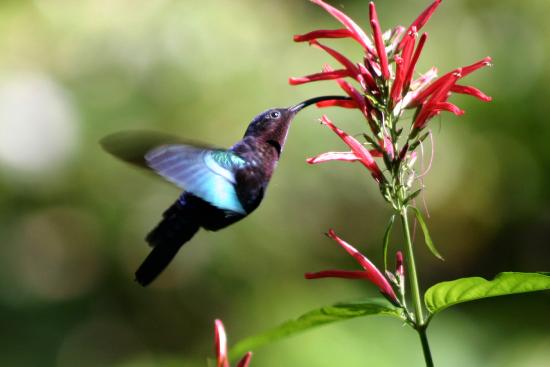9.5: Macroevolution
- Page ID
- 16771
\( \newcommand{\vecs}[1]{\overset { \scriptstyle \rightharpoonup} {\mathbf{#1}} } \)
\( \newcommand{\vecd}[1]{\overset{-\!-\!\rightharpoonup}{\vphantom{a}\smash {#1}}} \)
\( \newcommand{\dsum}{\displaystyle\sum\limits} \)
\( \newcommand{\dint}{\displaystyle\int\limits} \)
\( \newcommand{\dlim}{\displaystyle\lim\limits} \)
\( \newcommand{\id}{\mathrm{id}}\) \( \newcommand{\Span}{\mathrm{span}}\)
( \newcommand{\kernel}{\mathrm{null}\,}\) \( \newcommand{\range}{\mathrm{range}\,}\)
\( \newcommand{\RealPart}{\mathrm{Re}}\) \( \newcommand{\ImaginaryPart}{\mathrm{Im}}\)
\( \newcommand{\Argument}{\mathrm{Arg}}\) \( \newcommand{\norm}[1]{\| #1 \|}\)
\( \newcommand{\inner}[2]{\langle #1, #2 \rangle}\)
\( \newcommand{\Span}{\mathrm{span}}\)
\( \newcommand{\id}{\mathrm{id}}\)
\( \newcommand{\Span}{\mathrm{span}}\)
\( \newcommand{\kernel}{\mathrm{null}\,}\)
\( \newcommand{\range}{\mathrm{range}\,}\)
\( \newcommand{\RealPart}{\mathrm{Re}}\)
\( \newcommand{\ImaginaryPart}{\mathrm{Im}}\)
\( \newcommand{\Argument}{\mathrm{Arg}}\)
\( \newcommand{\norm}[1]{\| #1 \|}\)
\( \newcommand{\inner}[2]{\langle #1, #2 \rangle}\)
\( \newcommand{\Span}{\mathrm{span}}\) \( \newcommand{\AA}{\unicode[.8,0]{x212B}}\)
\( \newcommand{\vectorA}[1]{\vec{#1}} % arrow\)
\( \newcommand{\vectorAt}[1]{\vec{\text{#1}}} % arrow\)
\( \newcommand{\vectorB}[1]{\overset { \scriptstyle \rightharpoonup} {\mathbf{#1}} } \)
\( \newcommand{\vectorC}[1]{\textbf{#1}} \)
\( \newcommand{\vectorD}[1]{\overrightarrow{#1}} \)
\( \newcommand{\vectorDt}[1]{\overrightarrow{\text{#1}}} \)
\( \newcommand{\vectE}[1]{\overset{-\!-\!\rightharpoonup}{\vphantom{a}\smash{\mathbf {#1}}}} \)
\( \newcommand{\vecs}[1]{\overset { \scriptstyle \rightharpoonup} {\mathbf{#1}} } \)
\( \newcommand{\vecd}[1]{\overset{-\!-\!\rightharpoonup}{\vphantom{a}\smash {#1}}} \)
\(\newcommand{\avec}{\mathbf a}\) \(\newcommand{\bvec}{\mathbf b}\) \(\newcommand{\cvec}{\mathbf c}\) \(\newcommand{\dvec}{\mathbf d}\) \(\newcommand{\dtil}{\widetilde{\mathbf d}}\) \(\newcommand{\evec}{\mathbf e}\) \(\newcommand{\fvec}{\mathbf f}\) \(\newcommand{\nvec}{\mathbf n}\) \(\newcommand{\pvec}{\mathbf p}\) \(\newcommand{\qvec}{\mathbf q}\) \(\newcommand{\svec}{\mathbf s}\) \(\newcommand{\tvec}{\mathbf t}\) \(\newcommand{\uvec}{\mathbf u}\) \(\newcommand{\vvec}{\mathbf v}\) \(\newcommand{\wvec}{\mathbf w}\) \(\newcommand{\xvec}{\mathbf x}\) \(\newcommand{\yvec}{\mathbf y}\) \(\newcommand{\zvec}{\mathbf z}\) \(\newcommand{\rvec}{\mathbf r}\) \(\newcommand{\mvec}{\mathbf m}\) \(\newcommand{\zerovec}{\mathbf 0}\) \(\newcommand{\onevec}{\mathbf 1}\) \(\newcommand{\real}{\mathbb R}\) \(\newcommand{\twovec}[2]{\left[\begin{array}{r}#1 \\ #2 \end{array}\right]}\) \(\newcommand{\ctwovec}[2]{\left[\begin{array}{c}#1 \\ #2 \end{array}\right]}\) \(\newcommand{\threevec}[3]{\left[\begin{array}{r}#1 \\ #2 \\ #3 \end{array}\right]}\) \(\newcommand{\cthreevec}[3]{\left[\begin{array}{c}#1 \\ #2 \\ #3 \end{array}\right]}\) \(\newcommand{\fourvec}[4]{\left[\begin{array}{r}#1 \\ #2 \\ #3 \\ #4 \end{array}\right]}\) \(\newcommand{\cfourvec}[4]{\left[\begin{array}{c}#1 \\ #2 \\ #3 \\ #4 \end{array}\right]}\) \(\newcommand{\fivevec}[5]{\left[\begin{array}{r}#1 \\ #2 \\ #3 \\ #4 \\ #5 \\ \end{array}\right]}\) \(\newcommand{\cfivevec}[5]{\left[\begin{array}{c}#1 \\ #2 \\ #3 \\ #4 \\ #5 \\ \end{array}\right]}\) \(\newcommand{\mattwo}[4]{\left[\begin{array}{rr}#1 \amp #2 \\ #3 \amp #4 \\ \end{array}\right]}\) \(\newcommand{\laspan}[1]{\text{Span}\{#1\}}\) \(\newcommand{\bcal}{\cal B}\) \(\newcommand{\ccal}{\cal C}\) \(\newcommand{\scal}{\cal S}\) \(\newcommand{\wcal}{\cal W}\) \(\newcommand{\ecal}{\cal E}\) \(\newcommand{\coords}[2]{\left\{#1\right\}_{#2}}\) \(\newcommand{\gray}[1]{\color{gray}{#1}}\) \(\newcommand{\lgray}[1]{\color{lightgray}{#1}}\) \(\newcommand{\rank}{\operatorname{rank}}\) \(\newcommand{\row}{\text{Row}}\) \(\newcommand{\col}{\text{Col}}\) \(\renewcommand{\row}{\text{Row}}\) \(\newcommand{\nul}{\text{Nul}}\) \(\newcommand{\var}{\text{Var}}\) \(\newcommand{\corr}{\text{corr}}\) \(\newcommand{\len}[1]{\left|#1\right|}\) \(\newcommand{\bbar}{\overline{\bvec}}\) \(\newcommand{\bhat}{\widehat{\bvec}}\) \(\newcommand{\bperp}{\bvec^\perp}\) \(\newcommand{\xhat}{\widehat{\xvec}}\) \(\newcommand{\vhat}{\widehat{\vvec}}\) \(\newcommand{\uhat}{\widehat{\uvec}}\) \(\newcommand{\what}{\widehat{\wvec}}\) \(\newcommand{\Sighat}{\widehat{\Sigma}}\) \(\newcommand{\lt}{<}\) \(\newcommand{\gt}{>}\) \(\newcommand{\amp}{&}\) \(\definecolor{fillinmathshade}{gray}{0.9}\)The garter snake in Figure \(\PageIndex{1}\) preys on a variety of small animals, including small amphibians called rough-skinned newts. The newts produce a powerful toxin that is concentrated in their skin. Garter snakes have evolved resistance to this toxin through a series of lucky genetic mutations, allowing them to safely prey upon the newts. The predator-prey relationship between these animals has created an evolutionary "arms" race. It has resulted in extremely high toxin levels in the newts and ever greater resistance to the toxin in the snakes. This is an example of the coevolution of two species. Coevolution is a type of macroevolution.

What Is Macroevolution?
Macroevolution is an evolution that occurs at or above the level of the species. It is the result of microevolution taking place over many generations. Macroevolution may involve evolutionary changes in two interacting species, as in coevolution, or it may involve the emergence of one or more brand new species.
Origin of Species
One of the main topics in macroevolution is how new species arise. The process by which a new species evolves is called speciation. How does speciation occur? How does one species evolve into two or more new species? To understand how a new species forms, it is important to review what a species is. A species is a group of organisms that can breed and produce fertile offspring together in nature. For a new species to arise, some members of a species must become reproductively isolated from the rest of the species. This means they can no longer interbreed with other members of the species. How does this happen? Usually, they become geographically isolated first.
Allopatric Speciation
Assume that some members of a species become geographically separated from the rest of the species. If they remain separated long enough, they may evolve genetic differences. If the differences prevent them from interbreeding with members of the original species, they have evolved into a new species. Speciation that occurs in this way is called allopatric speciation. An example of allopatric speciation involves Kaibab squirrels that live on the rim of the Grand Canyon, as shown in figure \(\PageIndex{2}\).
Notes about these two groups of squirrels:
- Kaibab squirrels are found only on the north rim of the Grand Canyon, on the Kaibab Plateau. Abert's squirrels occupy a larger area on the south rim of the Grand Canyon.
- Kaibab squirrels became geographically isolated from Abert's squirrels, which are found on the south rim of the canyon.
- In isolation, Kaibab squirrel« evolved distinct characteristics, such as a complete whitetail.
- Abert's squirrels are the original species from which Kaibab squirrels diverged. Kaibab squirrels are currently classified as a subspecies of Abert's squirrels.
- Kaibab squirrels may eventually become different enough to be classified as a separate species.

Sympatric Speciation
Less often, a new species arises without geographic separation. This is called sympatric speciation.
- Hawthorn flies lay eggs in hawthorn trees. The eggs hatch into larvae that feed on hawthorn fruits. Both the flies and trees are native to the U.S.
- Apple trees were introduced to the U.S. by European settlers in the 1600s. Now, apple trees often grow near hawthorn trees. Some hawthorn flies started to lay eggs in nearby apple trees. When the eggs hatched, the larvae fed on apples.
- Over time, the two fly populations — those that feed on hawthorn fruits and those that feed on apples — evolved reproductive isolation because they breed at different times. Their breeding season matches the season when apples or hawthorn fruits mature.
- Because they rarely interbreed, the two populations of flies are evolving other genetic differences. They appear to be in the process of becoming separate species. As this example shows, behaviors, as well as physical traits, may evolve and lead to speciation.

Coevolution
Evolution generally occurs in response to changes in the environment. Environmental change often involves other species of organisms. In fact, many species evolve along with other species with which they interact. This is called coevolution. As one species changes, the other species must also change in order to adapt. The coevolution of rough-skinned newts and garter snakes is described above. Many other cases of coevolution occur in flowering plants and the species that pollinate them. The flowering plant and hummingbird in Figure \(\PageIndex{4}\) are an example. They have evolved matching structures. The tubular flowers of the plant are matched by the long, narrow beak of the hummingbird.

Timing of Macroevolution
Is evolution slow and steady? Or does it occur in fits and starts? It may depend on what else is going on, such as changes in climate or geologic conditions.
- When climate and geologic conditions are stable, evolution may occur steadily and gradually. This is how Darwin thought evolution occurred. This model of the timing of evolution is called gradualism.
- When climate or geologic conditions are changing, evolution may occur more quickly. Long periods of little change may be interrupted by bursts of relatively rapid change. This model of the timing of evolution is called punctuated equilibrium. It is generally better supported by the fossil record than is gradualism.
Review
- Define speciation.
- Describe how allopatric speciation occurs.
- What is gradualism? When is it most likely to apply?
- Describe the timing of evolutionary change according to the punctuated equilibrium model.
- Why is sympatric speciation less likely to occur than allopatric speciation?
- Why would macroevolution occur more quickly when there are major changes in the environment, such as changing the climate or geologic conditions, than when the environment is stable?
- What is reproductive isolation? Why is it necessary for speciation to occur?
- Kaibab squirrels are an example of what kind of speciation?
- Imagine there is a large lake that dries up in certain regions, creating several smaller, separate lakes. The original lake had a particular species of fish and some fish got trapped in each of the smaller lakes as the large lake dried up.
- Is there a greater chance of speciation in the fish in the smaller, separate lakes or in the original large lake? Explain your answer.
- If new fish species evolve from the original species in the small, separate lakes, would this be sympatric or allopatric speciation? Explain your answer.
- If speciation occurred in the small lakes as described in part b, and then flooding occurred and the small lakes joined to become one large lake again, do you think the fish are likely to become one species again? Why or why not?
- True or False. Speciation due to two populations breeding at different times in the same area is an example of sympatric speciation.
- True or False. Coevolution always occurs between individuals of the same species.
- Explain what the “punctuated” and “equilibrium” periods are in “punctuated equilibrium”.
Explore More
There is a dizzying diversity of species on our planet. From genetic evidence, we know that all of those species evolved from a single ancient ancestor. But how does one species split into many? Through the evolutionary process of speciation. This video illustrates the speciation process in birds to help you understand the basis of the earth's biodiversity:
Attributions
- Coast garter snake by Steve Jurvetson, licensed CC BY 2.0 via Wikimedia Commons
- Allopatric speciation by CK-12 released into the public domain
- Sympatric speciation composite by Mandeep Grewal, licensed CC BY-SA 2.0
- Apple maggot by Joseph Berger CC BY 3.0 via forestry images
- Hawthorn berries by Andrew Smith, licensed CC BY-SA 2.0 via Wikimedia Commons
- Apples on a tree by CSIRO, CC BY 3.0 via Wikimedia Commons
- Purple-throated carib hummingbird by Charlesjsharp CC BY 3.0 via Kiddle
- Text adapted from Human Biology by CK-12 licensed CC BY-NC 3.0


